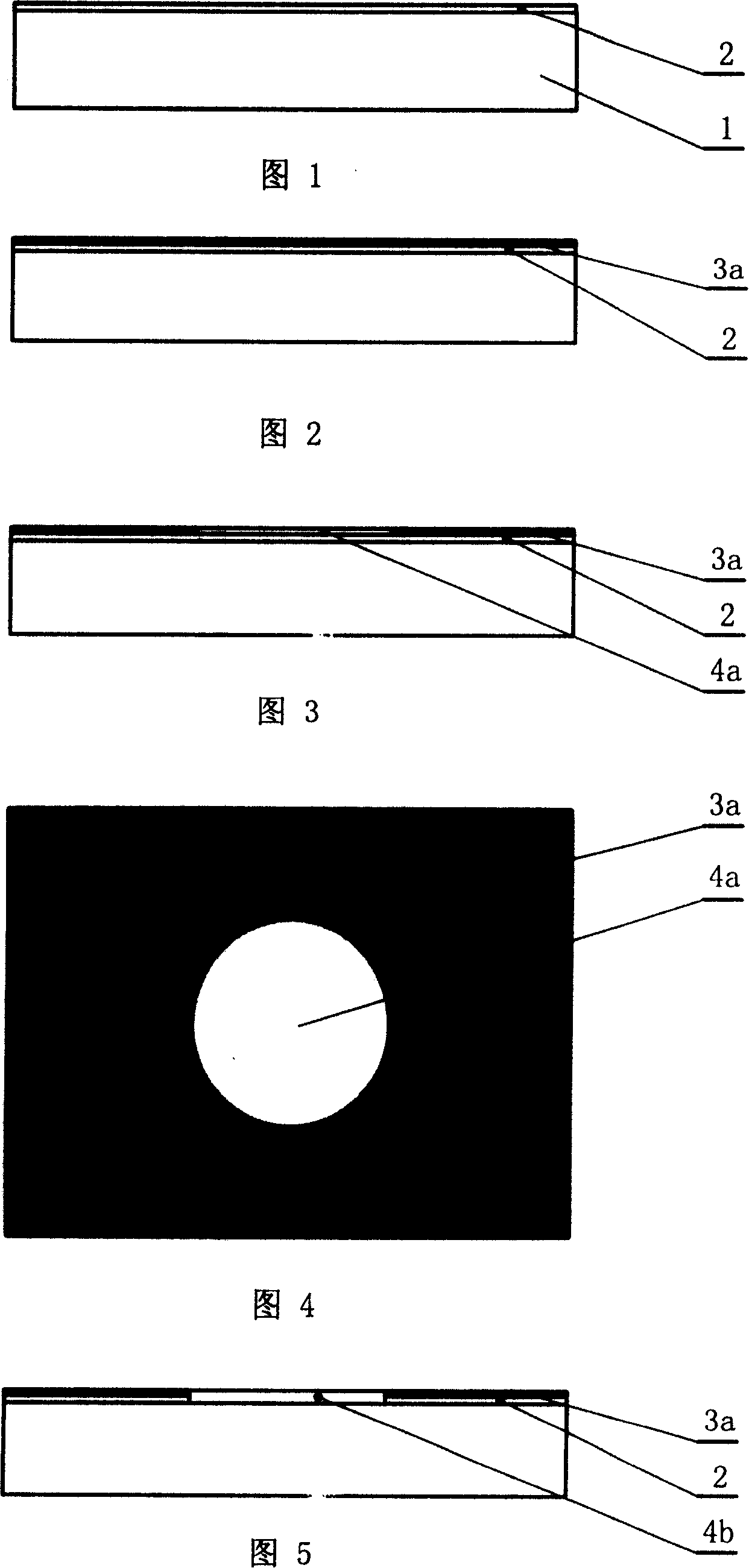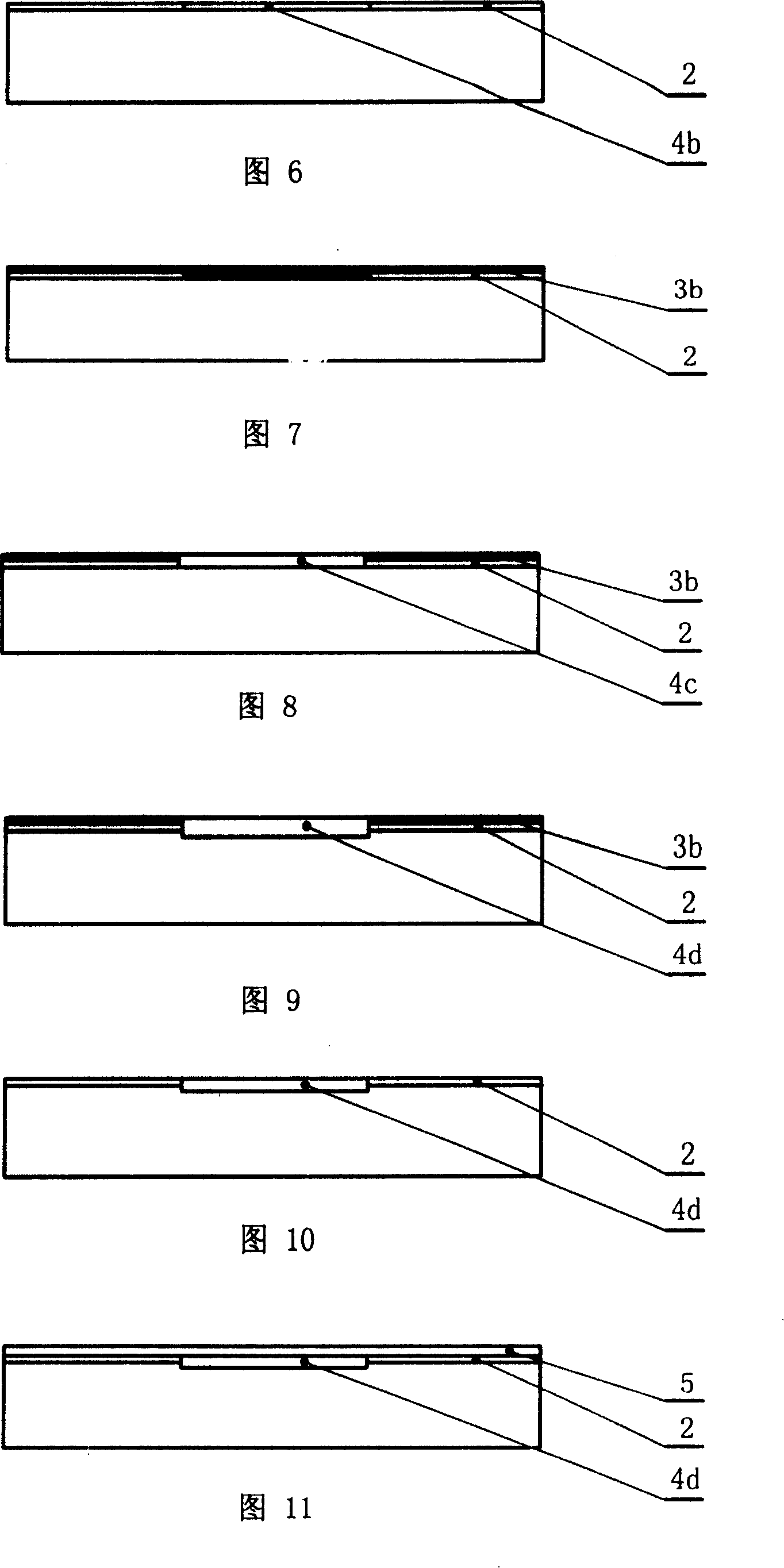Pressure capacitance type sensor substrate cavity-forming method
A sensor and pressure-capacitance technology, applied in the field of microelectronic machining, can solve the problems of low precision, cumbersome process, and low yield, and achieve the effects of high selection ratio, wide process manufacturing window, and low device damage
- Summary
- Abstract
- Description
- Claims
- Application Information
AI Technical Summary
Problems solved by technology
Method used
Image
Examples
Embodiment Construction
[0033] The cavity forming method of the pressure capacitive sensor substrate adopts the following steps:
[0034] ① Select a silicon wafer 1 with a thickness of 500 microns, wash and remove surface organic matter, transition metals, alkaline ions and particles, etc., and prepare a layer 2 by dry oxygen-wet oxygen-dry oxygen method in a KL45-Φ180 4-tube diffusion furnace Micron to 2.5 micron thick silicon dioxide layer 2, wherein dry oxygen is 15-20 minutes, wet oxygen is 8-10 hours, as shown in Figure 1;
[0035] ② coat positive BP212 photoresist layer 3a on silicon dioxide layer 2, obtain the thing shown in Fig. 2, use H94-25G type photolithography machine photolithography, form the circular microstructure concave cavity I4a of diameter 400 microns The material on the bottom surface is silicon dioxide, as shown in Figure 3 and Figure 4;
[0036] ③Using the photoresist layer 3a as a mask, use an ICP-2B type plasma etching machine to etch the silicon dioxide layer in the micro...
PUM
| Property | Measurement | Unit |
|---|---|---|
| thickness | aaaaa | aaaaa |
| thickness | aaaaa | aaaaa |
| diameter | aaaaa | aaaaa |
Abstract
Description
Claims
Application Information
 Login to View More
Login to View More - R&D
- Intellectual Property
- Life Sciences
- Materials
- Tech Scout
- Unparalleled Data Quality
- Higher Quality Content
- 60% Fewer Hallucinations
Browse by: Latest US Patents, China's latest patents, Technical Efficacy Thesaurus, Application Domain, Technology Topic, Popular Technical Reports.
© 2025 PatSnap. All rights reserved.Legal|Privacy policy|Modern Slavery Act Transparency Statement|Sitemap|About US| Contact US: help@patsnap.com


